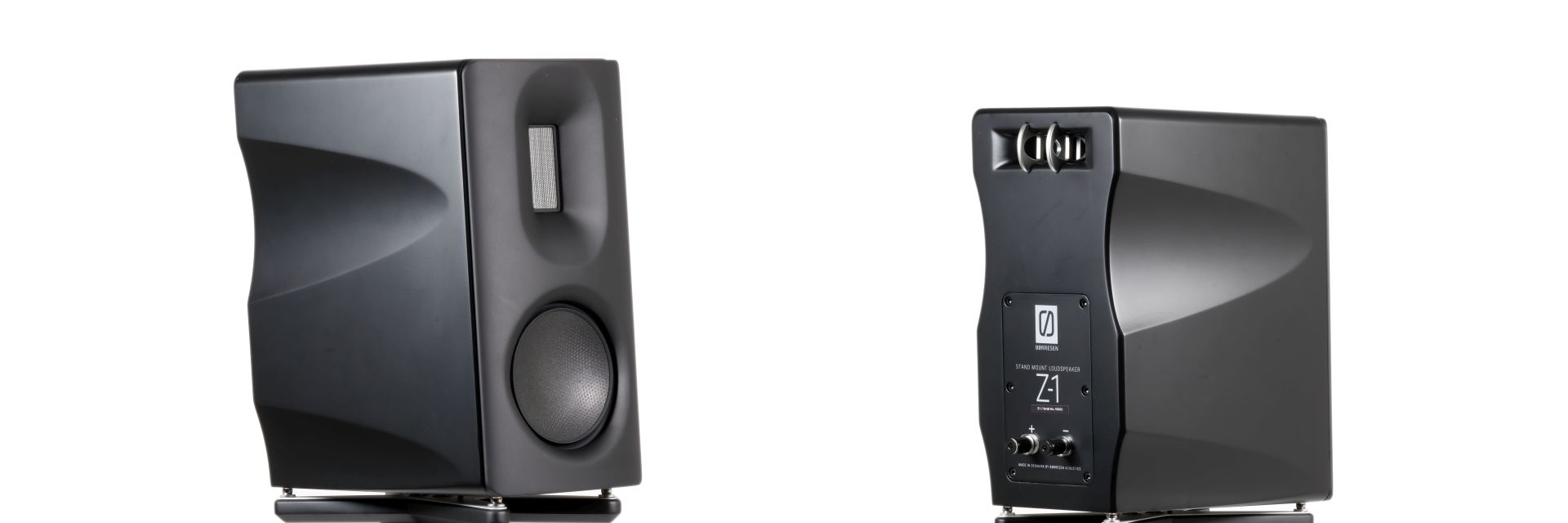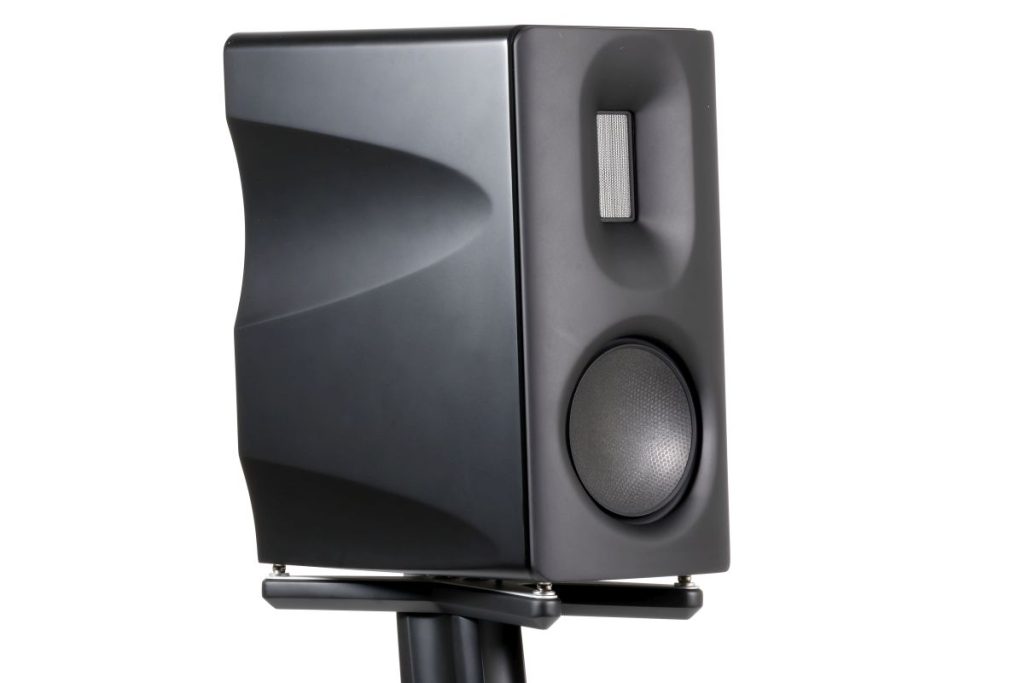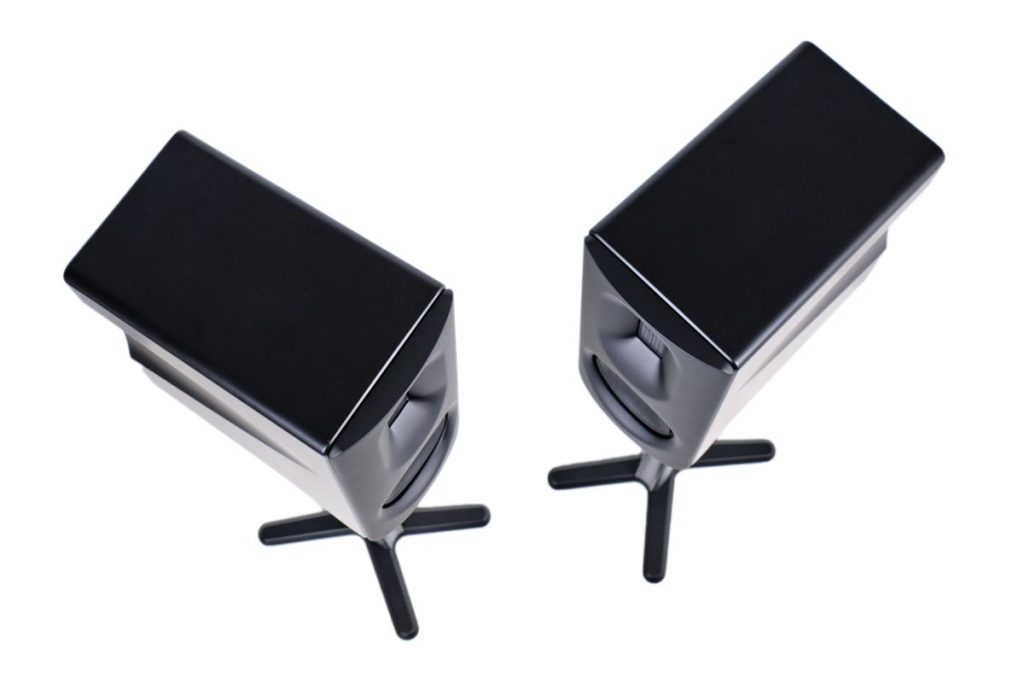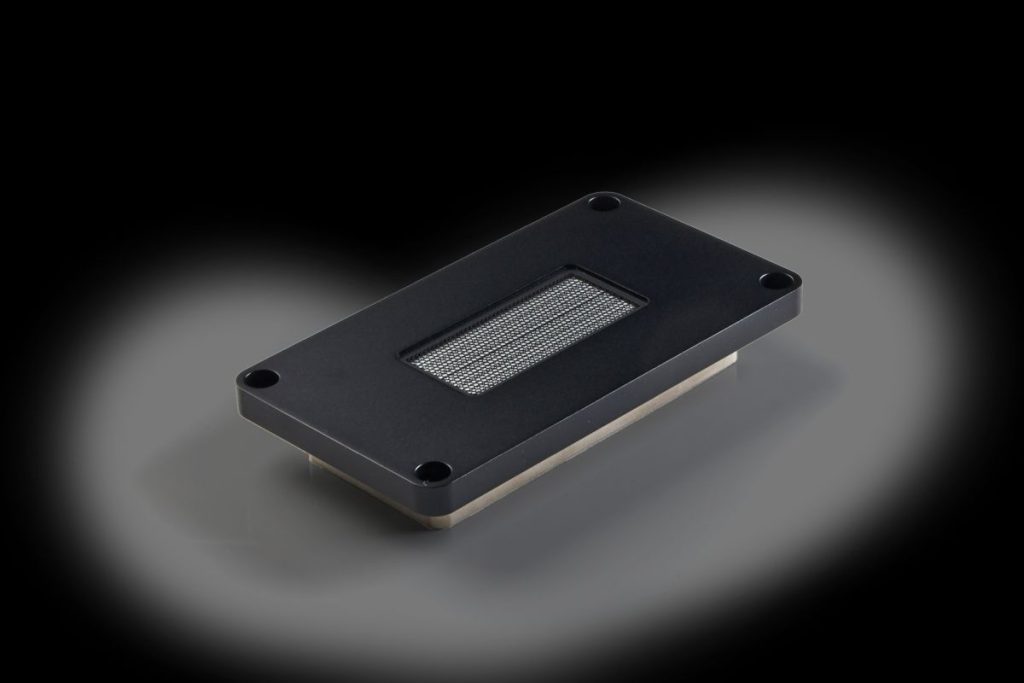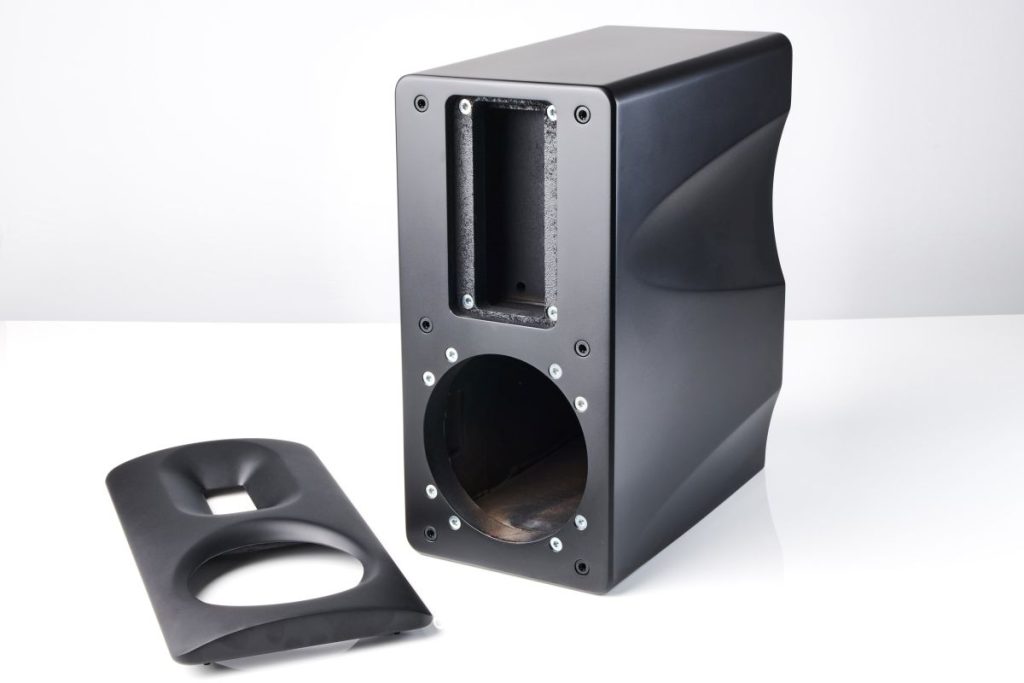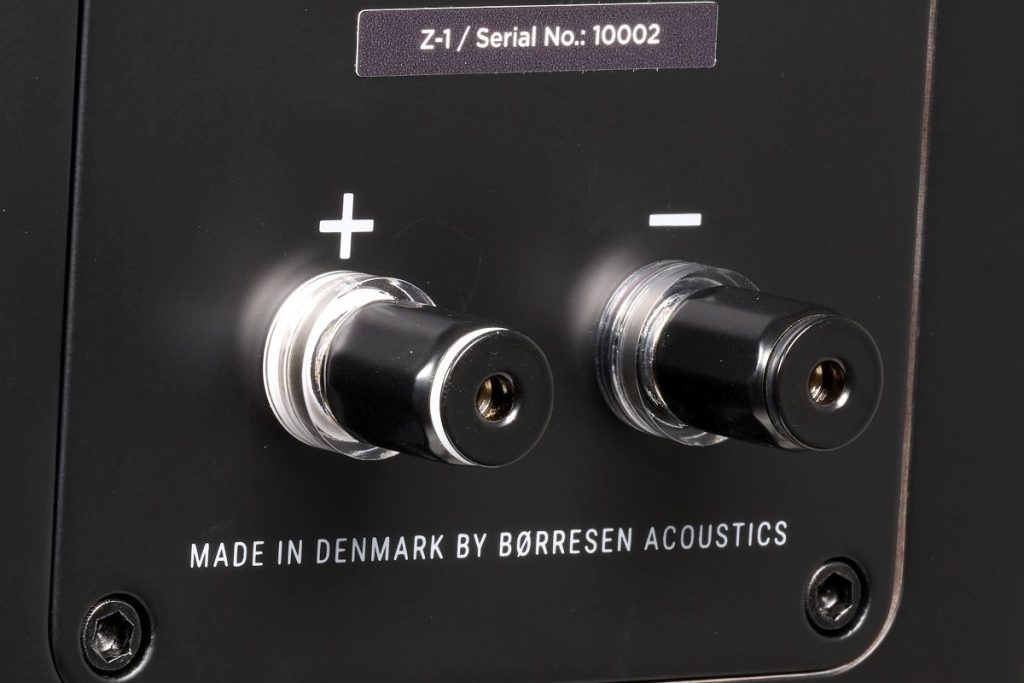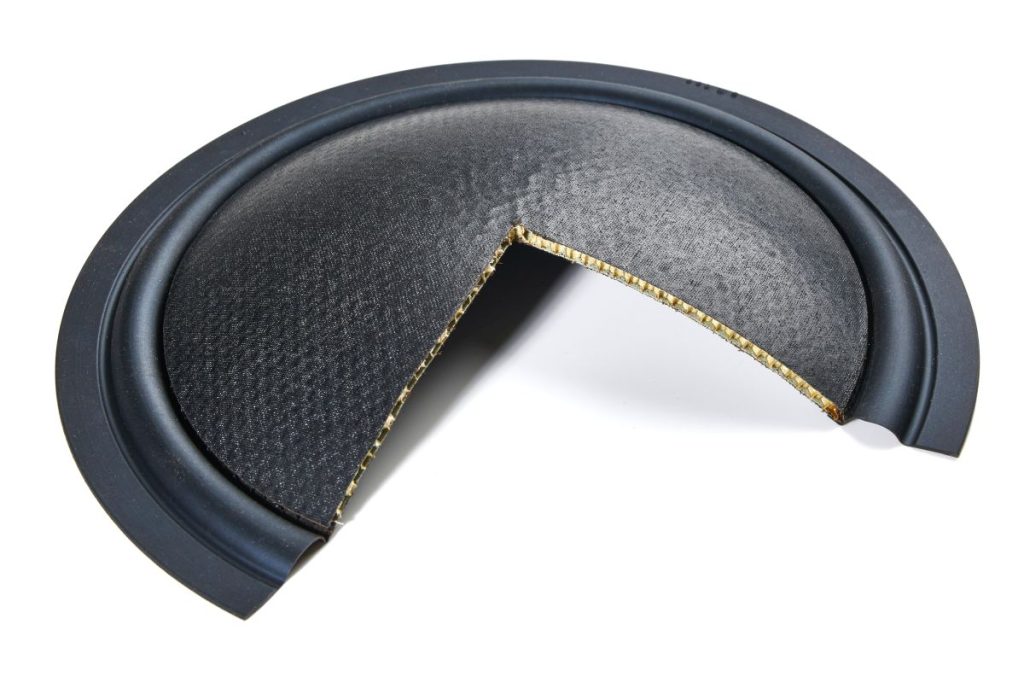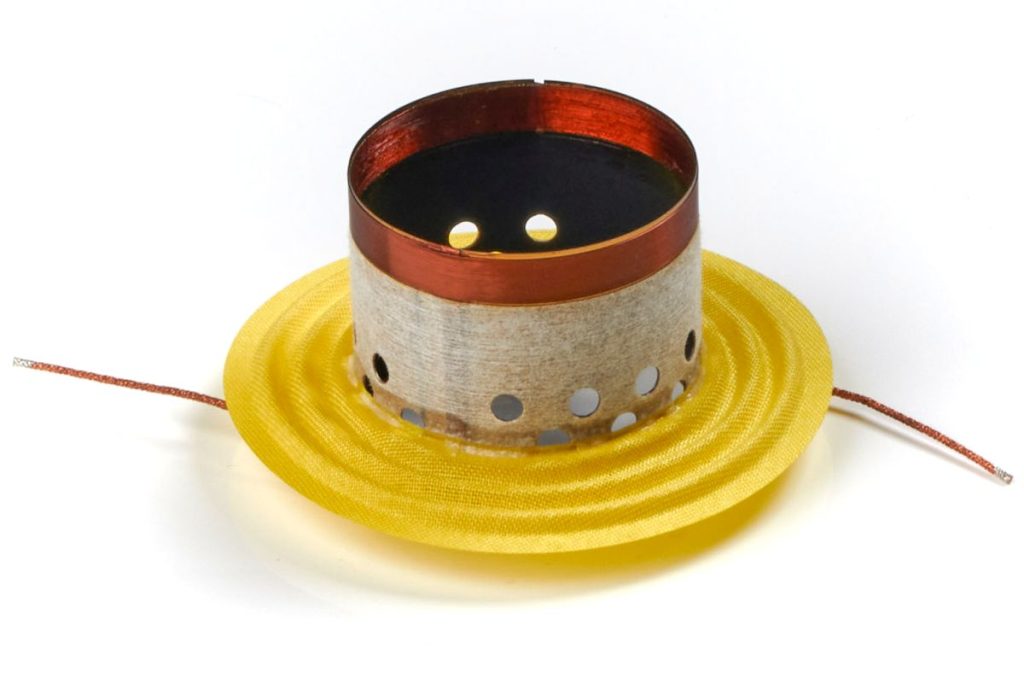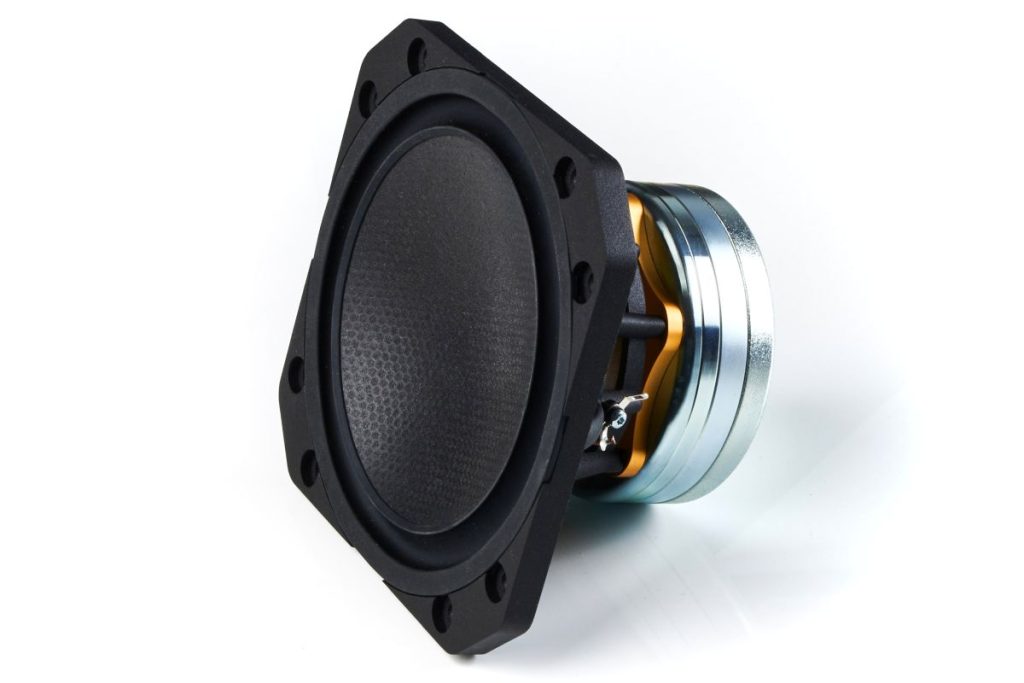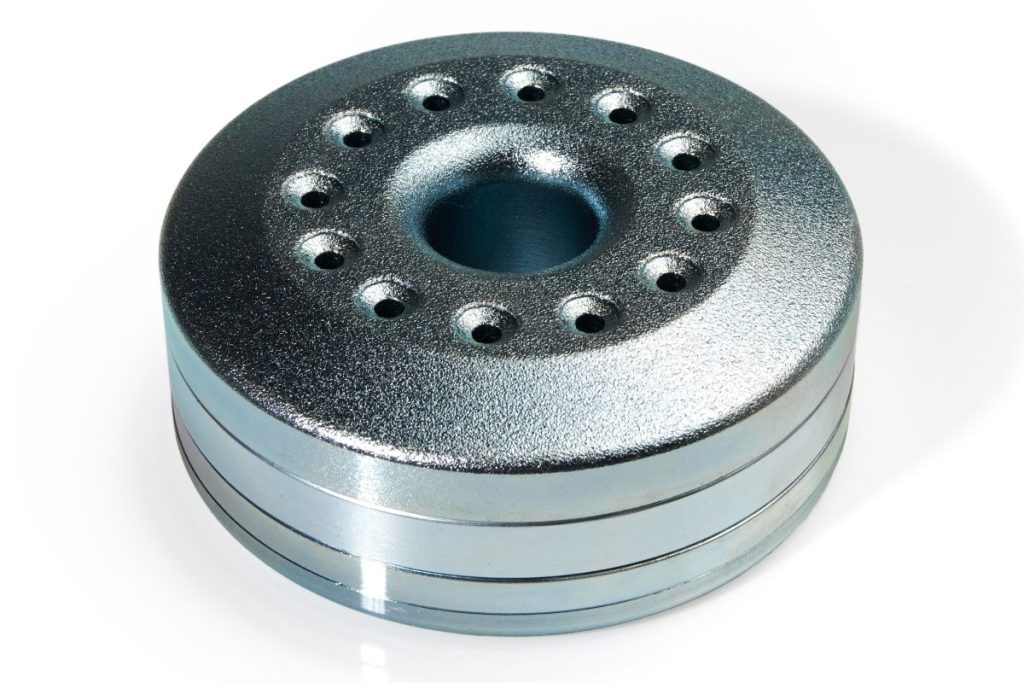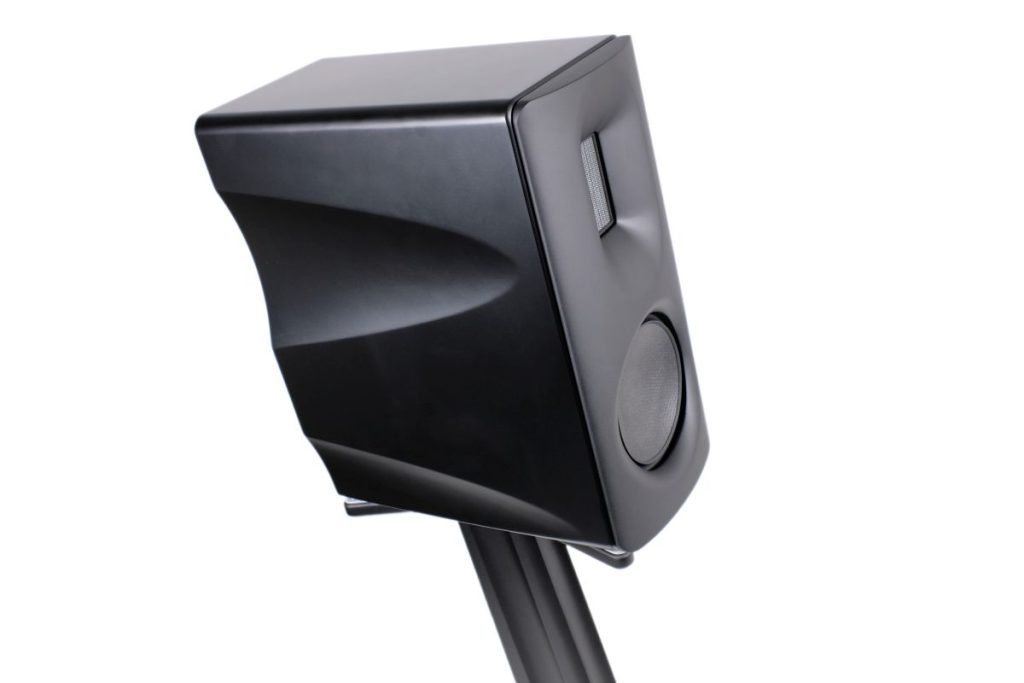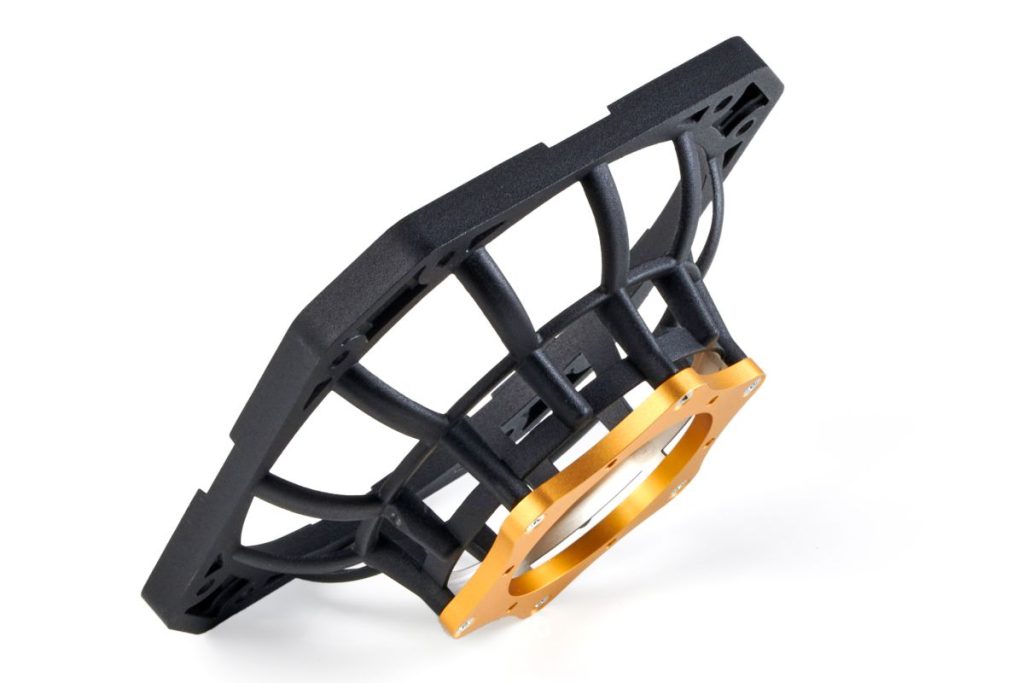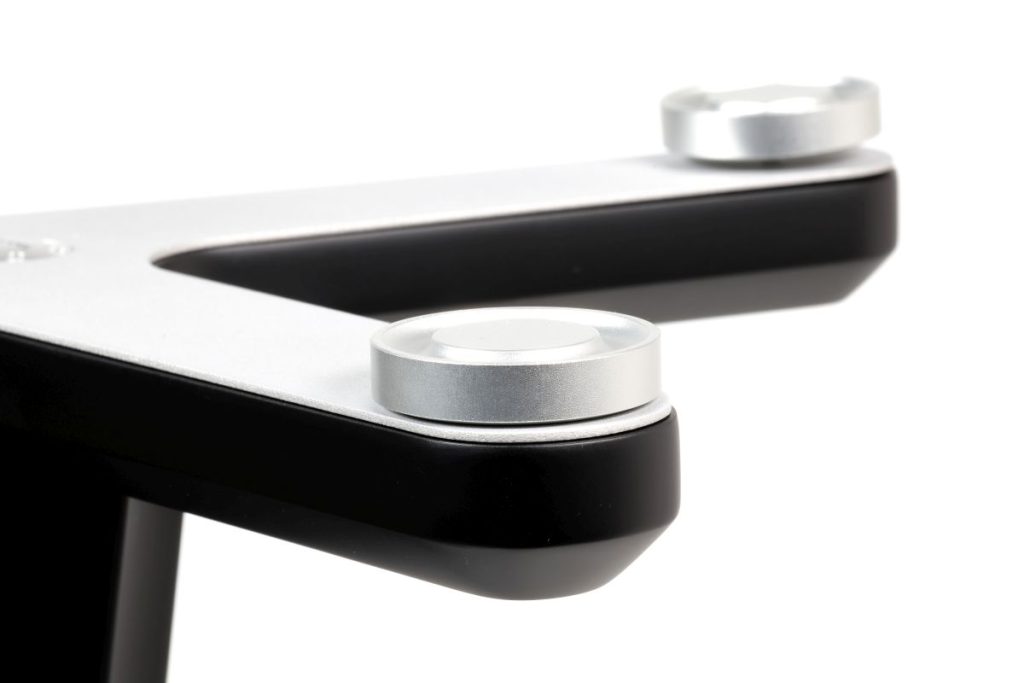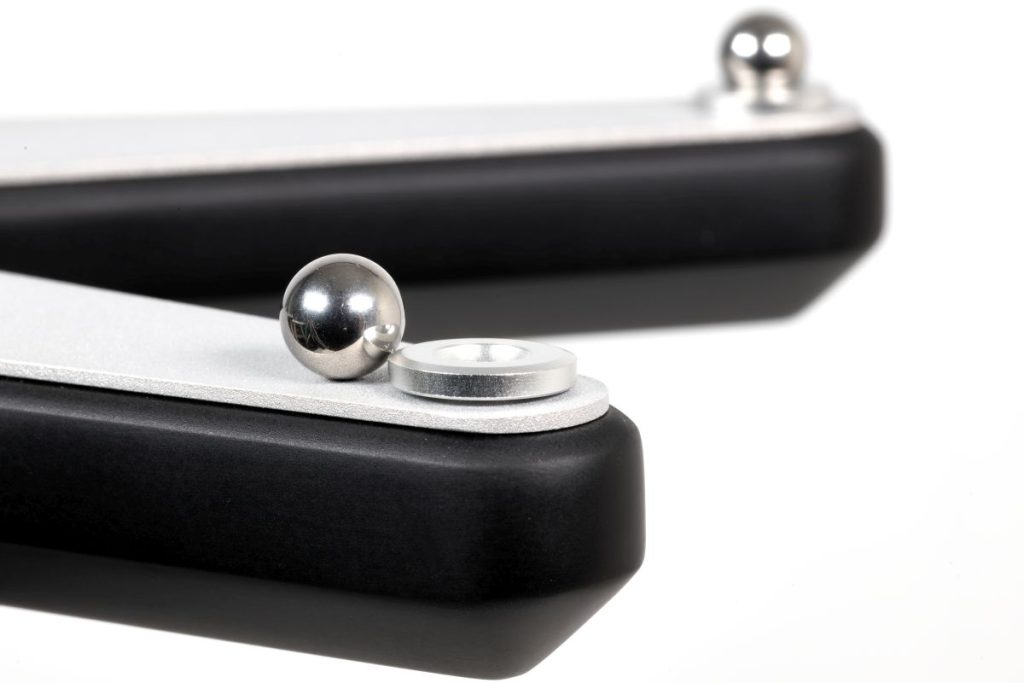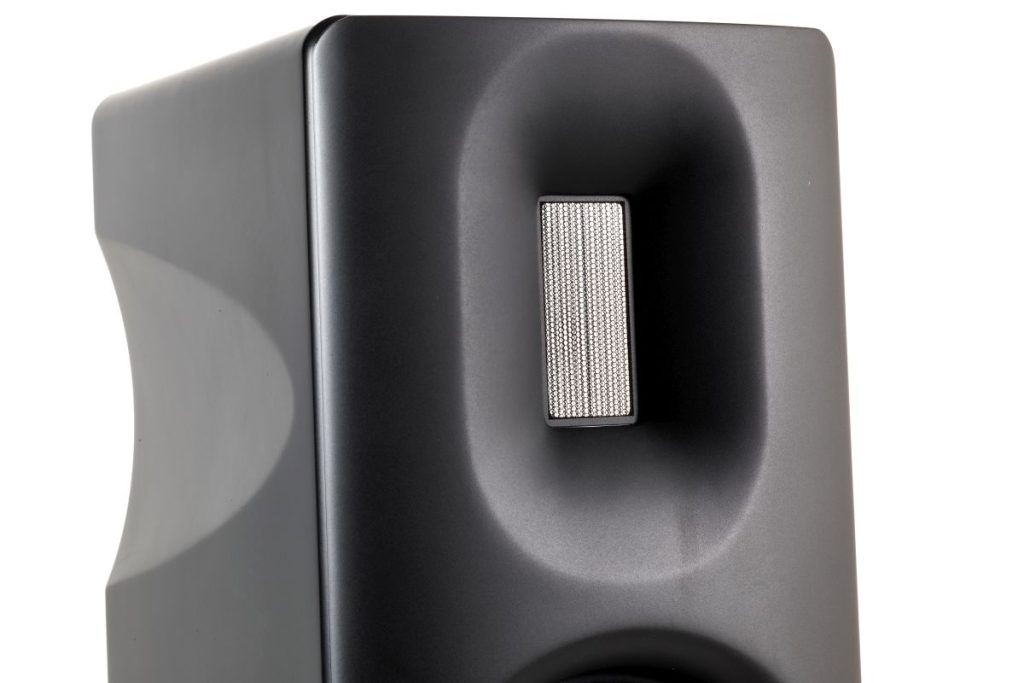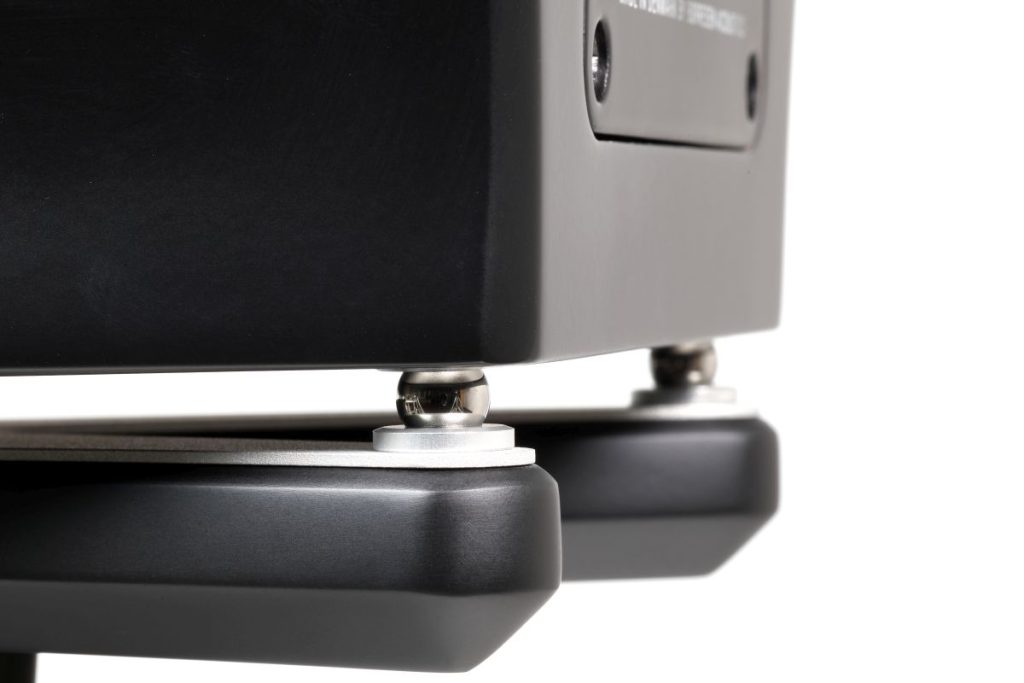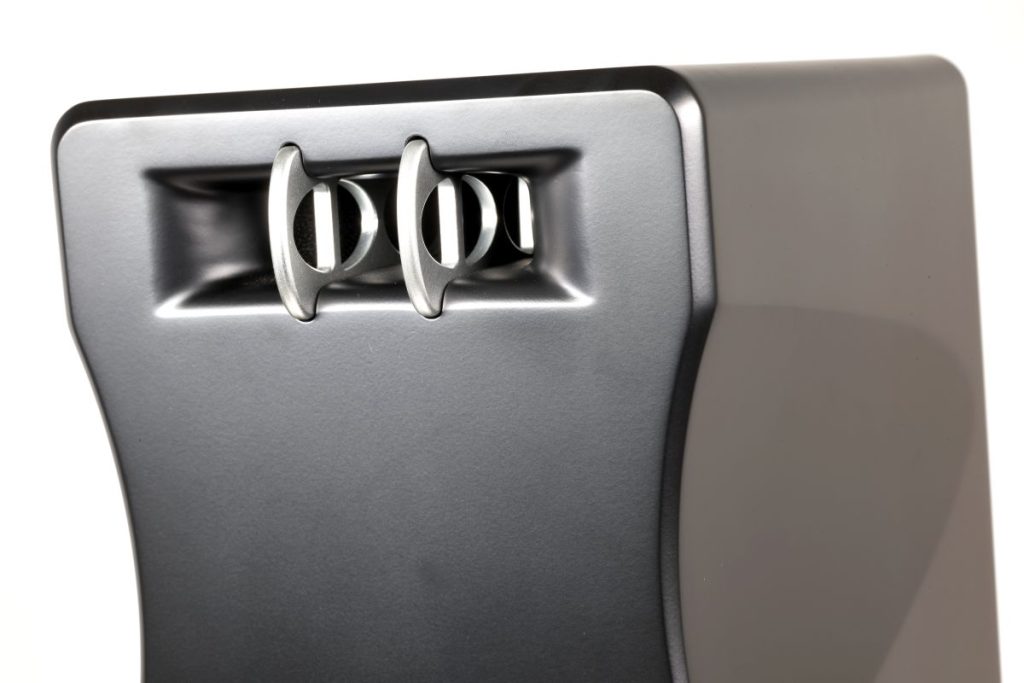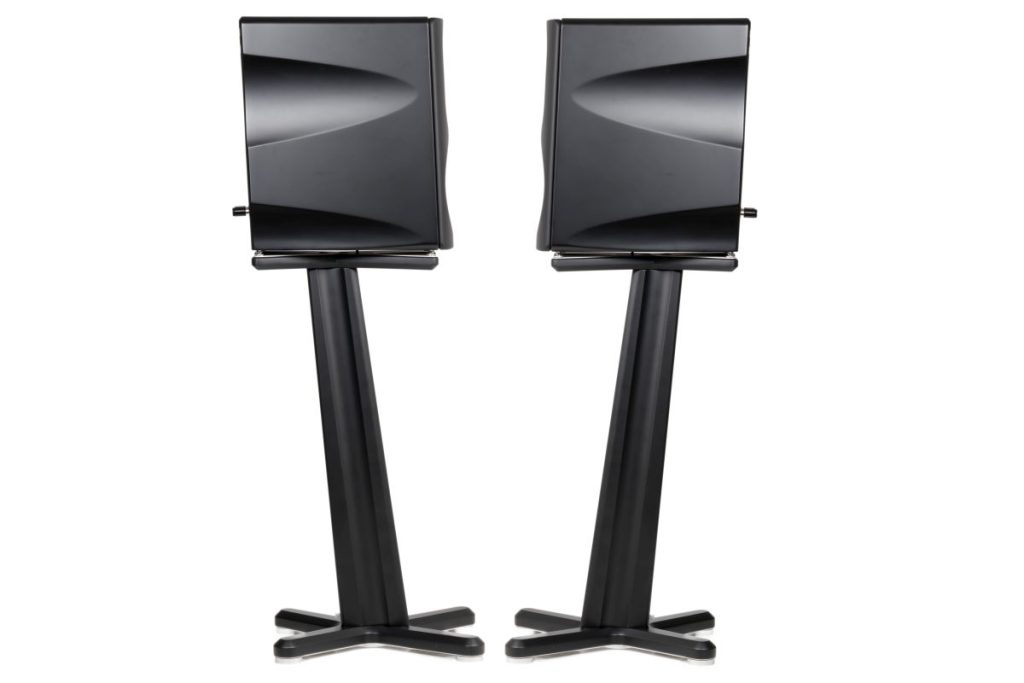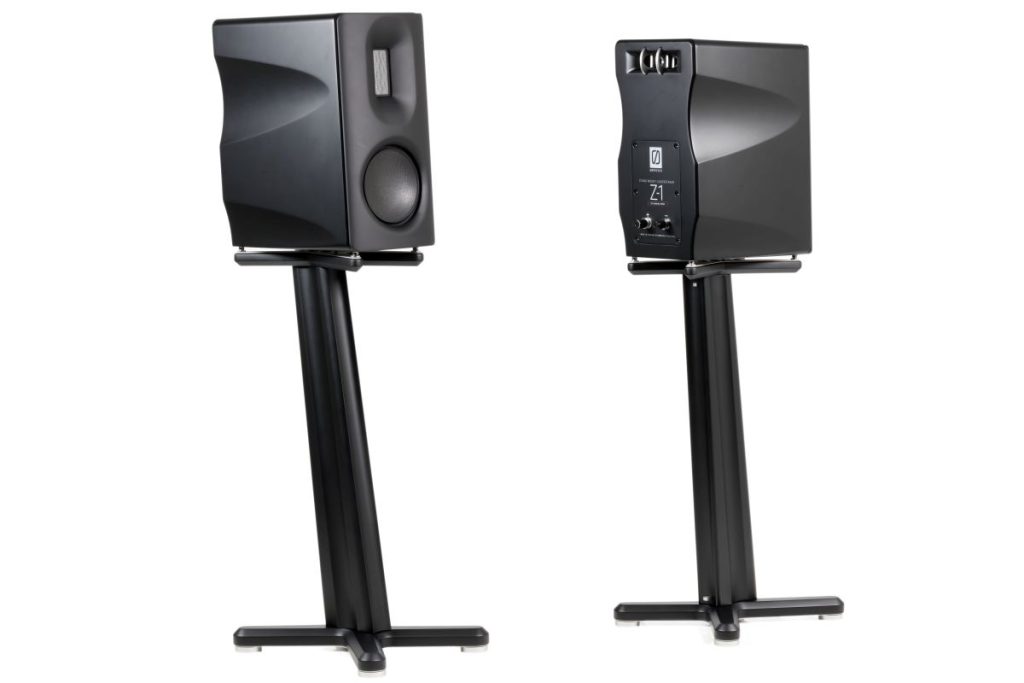Engineering an awesome loudspeaker is easy. You simply have to do everything yourself and in a different way than anybody else.
Everything affects everything, or, more specifically, everything has a bearing on everything else. So says Michael Børresen, the brains behind the Danish boutique loudspeaker manufacturer that bears his name. In turn, because everything affects everything else, the Børresen Z1 two-way compact monitor loudspeaker sways gently on its dedicated stand when you tap it. This slim-line, brilliantly multicomponent stand is, of all things, made of wood. In particular, it is made of HDF, the firmer (denser) sibling of the popular MDF. Every material has its own tone, Michael Børresen explains. And, when it comes to compact loudspeakers: “The tone of the stand is very important.” That’s the reason for the reduced, multicomponent HDF design, rather than a welded metal design, possibly even filled with sand or lead shot. Børresen says this is because a heavy stand means a heavy sound. So he placed the Z1 on four steel spheres, with adapters located on the upper face of the stand and the lower face of the speaker. Then, to ensure that it all doesn’t become too unstable, the speaker can also be screwed to the stand.
The makers of this speaker have really thought of everything. And that’s the way it should be, because the Børresen Z1 and its optional (but actually indispensable) stand are an expensive affair. A pair of these passive two-way units can be yours for around 10,000 euros, while the stands will set you back another 2,500 euros. That’s a lot of money, to be sure, but at that price the workmanship of the HDF, of which the Z1’s housing is made, is fantastic. Regarding look and feel, you would easily believe that solid aluminum had been milled, sandblasted and anodized to make this product. At a fleeting glance, the ribbon tweeter and the mid-bass driver cone, featuring a carbon-composite diaphragm, indicate that no mass-produced items are being used here. Nonetheless: 12,500 euros! That requires a closer examination.
The Z1’s drivers are proprietary designs by Michael Børresen. They are based on chassis, which Børresen first created more than 20 years ago at loudspeaker manufacturer Raidho. The rectangular tweeter ribbon has even older roots, harkening back to a patent taken out by electronics multinational Philips in the 1980s. However, the Z1’s tweeter has barely anything in common with that earlier incarnation. Børresen uses materials that the Dutch firm could only have dreamed about back then. On the one hand, there’s the powerful neodymium drive, and on the other, the mechanically and thermally resilient diaphragm based on an ultra-thin foil made of polyethylene naphthalate, or PEN for short.
The Børresen tweeter consists of a six-micrometer conductive aluminum layer laminated to the PEN foil, which is only five micrometers thick. This results in a surface area that exceeds any dome tweeter, yet at a fraction of its mass — the perfect prerequisites for maximum resolution. The mid-bass driver’s diaphragm, at a diameter of 13 centimeters, consists of two carbon fiber layers around a four-millimeter-thick Nomex core. Incidentally, a thin Nomex honeycomb core, laminated on both sides with spruce and cedar layers, is also used in the double-top guitar-making. Concert-standard double-top guitars deliver a vivid, dynamic sound thanks to their rigid yet very light tops. Of course, Børresen is not tailoring the loudspeaker diaphragm’s carbon/Nomex sandwich to achieve an appealing range of resonance, rather to achieve maximum non-resonance. Moreover, both the diaphragm and the guitar benefit from this design’s extremely low mass.
The Børresen Z1 mid-bass driver’s drive unit is a streamlined version of the spectacular motor used in the company’s top-range loudspeaker models. In fact, Michael Børresen designed and engineered a dedicated magnet system for them. Iron pole plates can be found in nearly all dynamic loudspeakers. Their function is to concentrate the magnetic field in the magnet gap where the voice coil is in motion. Since Børresen rates the metal as having an adverse distortion range, he found a way of doing without this and nevertheless obtaining the necessary coil field intensity. Needless to say, creating a non-iron drive system is a complex and expensive process. The Z1’s chassis includes pole plates and four copper rings to linearize impedance and minimize “iron distortions”. Furthermore, the copper-coated aluminum voice coil sits on a ventilated titanium support, the coil winding is 8 millimeters long and the magnet gap is 12 millimeters long. Thanks to the copper rings, the magnetic field is concentrated on the gap’s edges, thereby enabling control to be maintained in the event of major deflections, when the coil partially exits the gap.
Børresen states the drive system’s inductance is 0.06 millihenry — a spectacularly low figure, which is said to be undercut even by the non-iron chassis. Next, the audio crossover springs a surprise. The second-order filter manages with a small handful of components — but something else lives on the circuit board, a circuit that I am familiar with. It is the “secret ingredient” used by Aavik, Michael Børresen’s electronics hotbed, and it is also used in the power products provided by his Ansuz accessories label. Only Børresen knows exactly how it works. The general idea is that a microcontroller generates a square wave frequency, the electromagnetic by-products of which impact an audio circuit interference. But that is an active circuit, while the Z1 is a passive loudspeaker. What the hell? Michael Børresen provides clarification, and I can see him grinning down the phone line. The amplifier power feed covers every base, and the circuit barely consumes any power. Børresen talks about “noise cancellation” in the loudspeaker, about neutralizing the cables’ antenna effect. That is truly unique!
But let’s have a listen. I place the Børresen Z1 where my Ayons are usually positioned. The four aluminum disks on the HDF stand’s bottom end are adapters for the Ansuz Darkz feet. Given that a set of four costs almost as much as an individual Z1, I decide to dispense with this tuning aid. Considering the elaborate concept applied, I expect nothing less than absolute excellence, even without the Darkz. The live recording of Gidon Kremer’s performance in Prague in June 1980 (Praga PR 50024) is ideal for sounding out a loudspeaker’s tonality.
Kremer’s violin was recorded on analog audio tape, and plays such an ample harmonic range, that any tweeter will inevitably reveal its true colors. When played through the Z1, the instrument sounds exactly as you would expect given the technical effort behind it: accessible, clear, poignant or soft, just as Kremer intended it to be. The baroque cello of Pieter Wispelwey and the fortepiano of his duet partner Dejan Lazic (Channel Classics CCS SA 22605) back up that solid first impression. Both instruments gracefully occupy the space, the illumination is bright and, in spectrum terms, definitely “white light”. The cello conveys less resin and gut string “twang” than I am familiar with when reproduced via conventional sound transducers.
In dynamic terms it is awesome — if you can say that about a Beethoven cello sonata. Now I equally enjoy listening to the legendary Horowitz in Moscow album on account of the spectacular special expression and irresistible musicianship of this master pianist. Coughing was seldom more audiophile, doors were seldom slammed in a more high-end manner than on this Sunday in April 1986 at the Great Hall of the Moscow Conservatory. The Børresen Z1 superbly involves the space. The vast ambient noise does not manifest separately, but integrates entirely naturally and unspectacularly into the big picture through myriad, almost microscopic transient and decay processes, which other loudspeakers evidently suppress. The result is an extraordinarily relaxed listening experience, an exhilarating feeling of being there. Magnificent.
But Børresen’s smallest speaker has other talents. Roger Waters’ Amused to Death album does the rounds on the Bauer Audio DPS 3. What more can one say — it bangs, it rocks and Waters’ voice is so clearly the center of attention, as if he gargled once more before every take. When the drums get going, you just want to rub your eyes. Indeed, where does the Z1 conjure this broadside from? This compact unit is evidently no complex load, as my Rowland power amplifier can get stuck in with relish here and show its worth. At last, the birdsong at the end of the record comes through so airily that you can nearly smell fragrant woodland air.
Børresen’s bass reflex design must be applauded at this moment. During our conversation, he emphasizes this design in terms of response qualities and tonal forthrightness — he uses the wonderful term “springiness”. The Børresen reflex solution is a wide rectangular aperture at the top end of the rear panel. It has an aerodynamically efficient shape, with the lateral inner surfaces composed of sound-absorbing foam. Two inserted, perforated metal components are designed to generate turbulence, thereby breaking up any final resonance so that absolutely no sound coloration, let alone flow noise, can occur. I check out Børresen’s claim with the helping hand of Berlin DJ Rícardo Villalobos’ album Re:ECM and turn up the volume. The subwoofer declares heroic cadences, while the deep bass is clean as a whistle. Simultaneously, the sample quality finds itself anew. Villalobos is an obsessive sound nerd, whose studio (which I had the privilege of briefly visiting several years ago) features only the finest production and listening equipment.
The Børresen Z1 is truly an impressive piece of engineering. The more time you devote to this compact speaker and the ideas within it, the more you understand its deserved price tag. Michael Børresen has created an impressive, thoroughly idiosyncratic sound transducer, yet it lacks any undue airs and graces. The Z1 performs as clearly as a mountain stream, is extremely high-resolution, makes quick dynamic headway and provides a highly satisfying listening experience.
Accompanying equipment
Turntable: bauer audio dps 3 | Tone arm: bauer audio Tonarm | Cartridge: Lyra Kleos | Phono preamplifier: bauer audio Phono | CD player: Electrocompaniet EMC 1 UP | Music server: Innuos Zenith Mk III | DAC: Aqua La Voce S3 | Preamplifier: Silvercore linestage two | Power amplifier: Rowland Model 2 | Cables: Fadel Art, Ansuz, Sun Audio | Accessories: DIY rack, granite bases
Loudspeaker
Børresen Z1
Concept: dynamic, 2-way compact loudspeaker, passive | Equipment: proprietary ribbon tweeter, proprietary mid-bass driver (13 cm carbon/Nomex conical diaphragm) | Frequency response: 50 Hz to 50 kHz | Impedance: 6 Ω | Sensitivity: 86 dB | Connections: single wiring terminal | Special features: technically and tonally adapted stand (optional, price for pair, about € 2500) | Color finish: gray, white | Dimensions (W/H/D): 18.5/37/34 cm (Z1), 28/101.5/36 cm (Z1 + stand) | Weight: 11.6 kg, stand 3.3 kg | Warranty period: 5 years | Price for pair: about €10,000
Børresen Acoustics ApS
Rebslagervej 4
9000 Aalborg
Denmark
Phone +45 5365 5987

